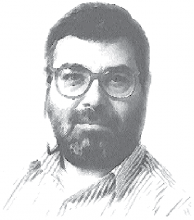You are here
Syria’s fate risks repeating the catastrophe of 1920
Aug 20,2015 - Last updated at Aug 20,2015
As has long been the case throughout history, developments in Syria today reflect significant trends that pertain to other parts of the Arab world, especially Yemen, Iraq, Libya, Egypt, Somalia, Palestine and Lebanon.
These lands share a common challenge and vulnerability that have plagued most of the Arab world, for most of the past century: the thin nature of Arab statehood, which is weakened from the bottom by the non-existence of citizenship rights, distorted from the top by external interference by foreign powers, and mangled in the middle by generally mediocre and often brutal governments.
So it is distressing that Syria’s fate is largely being pondered and even negotiated these days among officials and military leaders in Iran, Saudi Arabia, Russia, Turkey and the United States — often the same people and governments that have been funding and driving the civil wars within Syria.
Just as Syria was created after World War I by negotiations among Western powers that decided the country’s composition and its leadership and power configuration, Syria today is once again being reconfigured in the image of other powers.
The significant new elements today compared to the 1920s are the direct involvement of four regional powers (Iran, Turkey, Saudi Arabia and Hizbollah) alongside the global powers, the increasing autonomy of the Kurdish regions, the (probably temporary) breakaway Daesh region, and the intense internal militarisation of the entire country.
As non-Syrian powers meet to discuss the fate of Syria, the input of Syrians themselves is restricted to occasional thoughts offered by any of several elite groups. These include the remnants of the government headed by the Assad family, various Islamist and nationalist opposition armed movements, Kurdish groups and the occasional figures representing traditional national actors like Sunnis, Druze, Christians, tribal groups, businessmen and others in society.
The concept of a Syrian citizenry with sovereign rights and the capacity to determine its own fate remains largely alien to the land today, as it has for the past century — as it has throughout the entire Arab world.
It would have been so much easier a century ago for Arab men and women to decide how they would like to run their own societies, and how they would like to configure themselves in the newfangled imported-and-imposed-from-Europe concept of a distinct nation-state with borders and passports.
But ordinary men and women in Syria and other Arab lands never really had the opportunity to define themselves, shape their own destiny and run their own country.
Power was handed to hand-picked local elites by European powers in the 1920s and 30s, or seized in the early decades of the wondrous new instant statehood by local elites that included aspiring regional royalists, land-owning traditional lordly and commercial families, military officers or ethnic minorities that ruled by force.
It seems that this same combination of actors, more or less, is still at play in Syria today, and in slightly different combinations in Libya, Yemen, Iraq and elsewhere in the Arab world.
The challenge we increasingly face across the Arab world is not only to bring civil wars to a halt or to restore public order. It is to re-establish in a more legitimate and durable form states that finally collapsed this century under the last century’s weight of their own mismanagement, usually due to military-run theft and squandering of national resources and potential.
It is hard to think of a more potent combination of idiocy, cruelty and criminality than the idea that regional and foreign powers can use the same principles of Lego-like crafting of Arab countries today as they did a century ago, and expect a better result.
Arab states — indeed, any state in the world — that reflect the narrow interests of foreign and regional powers more than they serve their own citizens are certain to collapse in a heap of failure, violence, fragmentation and mass misery, as we see across parts of the Arab world today, most graphically and painfully in Syria.
It will not be easy or quick in the current circumstances to find a way that allows Syrian citizens — like any other Arab citizens who equally yearn for the same opportunity — to engage in mechanisms that permit them to shape their own country’s governance system, national values, and domestic and foreign policies.
Yet, this will always be the benchmark that determines if a transition from war to peace is credible, legitimate, efficacious and lasting.
A century ago, ordinary Arab citizens and elites alike rose up in a rebellion and renaissance (Nahda) movement against Ottoman and European domination; they did so again five years ago, in the historic and continuing uprisings of 2011-12.
They will do so again and again, until their fate is no longer the plaything of foreign and regional powers, and they can live normal lives as citizens with civic and political rights, and human beings with universal human rights.













